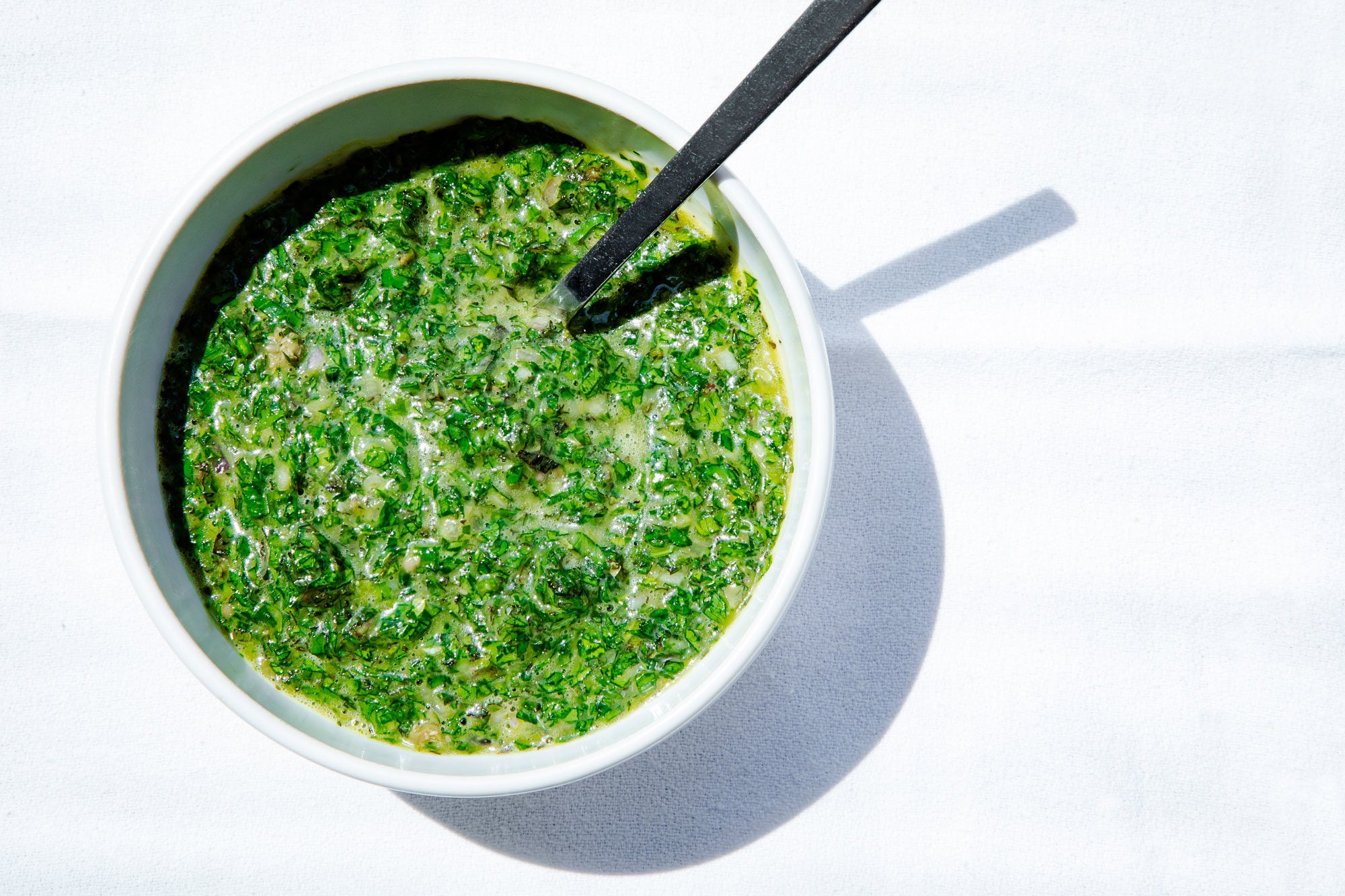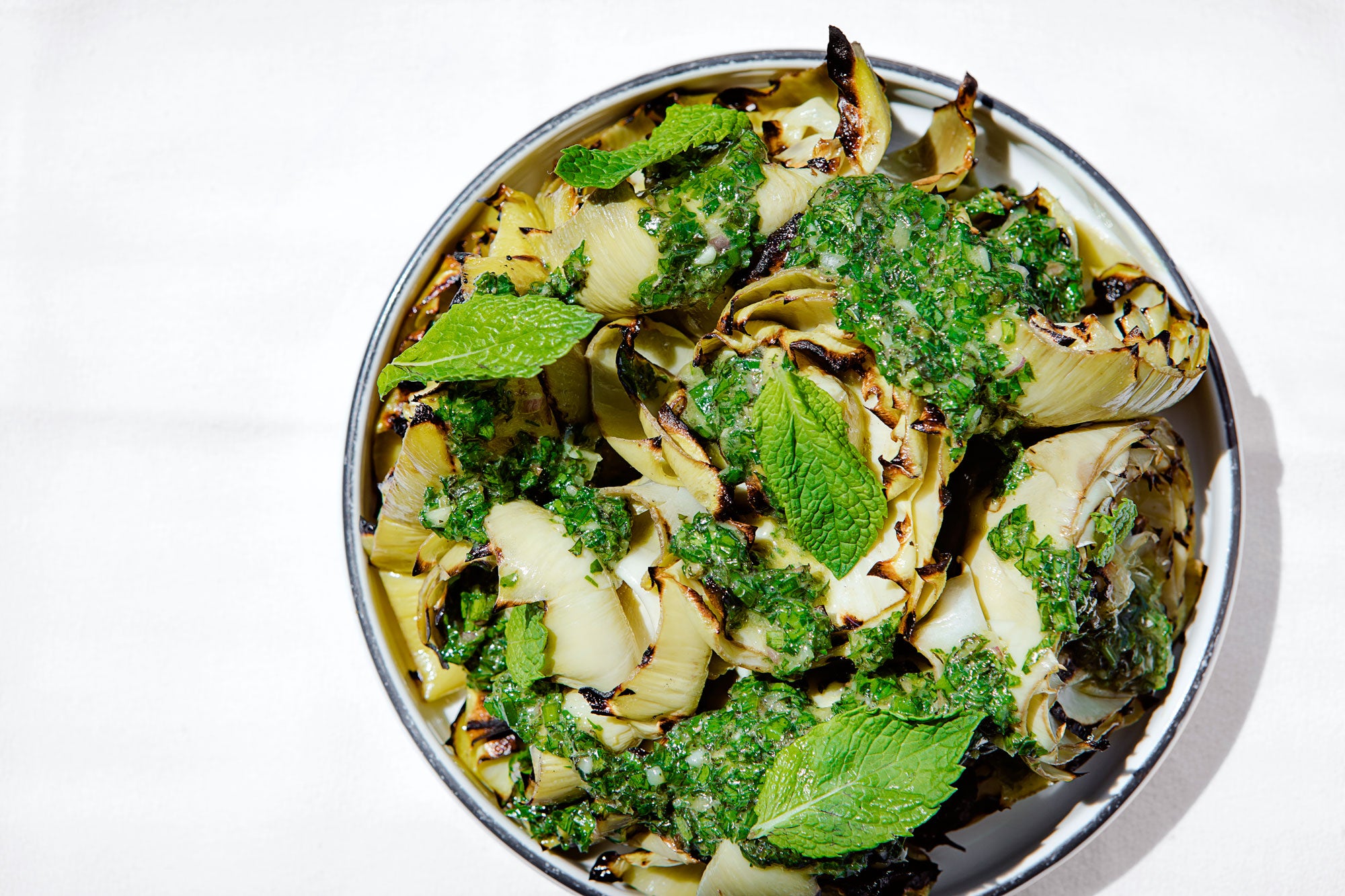
Keep the vibrant, herby sauce on hand to wake up grilled meats, basic eggs, and even plain old toast.
Salsa verde, or green sauce in Spanish and Italian, is a technique of blending herbs with fat and acid that stretches to kitchens far and wide. California’s mall salad classic, green goddess, is technically a salsa verde. It was invented in 1923 as a mix of spinach, herbs, anchovies, and mayonnaise and has evolved today to sometimes contain avocado, sometimes Greek yogurt, sometimes buttermilk. The dressing started out as a nod to lighter French and Italian oil-based varietals, which call for capers and egg yolks in Italy and lemon juice in France. Swap the parsley for cilantro and add the fruity backbone of tomatillo with a tinge of spice from jalapeño, and you have something closer to the Mexican sauce by the same name.
All of these could feel equally at home in your Sweetgreen to-go box or alongside a bowl of tortilla chips—hitting the same savory, herbaceous notes with different ingredients. What they share, besides their eponymous color, is their practicality in the kitchen. Keep a jar of your region-specific (or not-so-specific) salsa verde on hand, and it’ll reinvigorate everything it touches with its herby freshness and vibrant acidity.
When it comes to Italian salsa verde, there’s a slightly more specific baseline of boxes to check off. “It’s really all about the perfect balance of herbs, acid, shallot, olive oil, and mustard,” says Missy Robbins, chef and owner of Lilia and Misi in Brooklyn. That means a blend of parsley, chives, and tarragon are at play, lending a mix of allium-based savoriness, grassy brightness, and a touch of fennel-like bittersweetness. From there, capers and a squeeze of mustard supply briny tang, while anchovy evokes a more intense umami, with just the right amount of raw garlic and shallots to kick it into the next gear.

Grilled artichokes and mint salsa verde from Misi in Brooklyn
The natural pairing is with grilled meat and fish—dishes that depend on the verdant and biting blend to counteract rich cuts of rib eye and buttery, fork-tender halibut filets. But salsa verde is also meant to be dipped into and dolloped onto whatever you see fit. At Lilia, you’ll find it ladled over charred black bass, but Robbins is quick to point out that it’s just as worthy as a dipping sauce for grilled bread, her personal favorite snack.
The Italian region of Piemonte has its own way with green sauce, where the anchovies over bread come bathed in it. It’s a savior for low-effort meals that could use a little lift: Use it to flavor the blank canvas grain on your plate, whether it’s plain white rice or buttered egg noodles. Spoon some over microwaved leftovers that have lost a bit of their luster, like stewy lentils or a brothy white bean soup.
And while the rules of Italian salsa verde are anchored to the right balance of herbs, oil, tang, and alliums, finding your own combination is still built into the framework. Robbins adds mint for an extra perk of freshness to accompany grilled artichokes, and cookbook author Deborah Madison opts for a marjoram-inflected salsa verde, noting it adds a summery feel to the sauce that’s less expected than basil. (Although there’s nothing wrong with reaching for that herb most easily found at your grocery store.) In her cookbook In My Kitchen, she stands behind paring it with any vegetable, such as grilled leeks, steamed fennel, or rainbow beets.
Salsa verde can be whatever you want it to be. It’s just green sauce, after all.